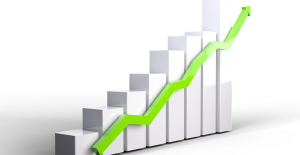People Analytics and Talent Management are not new terms in the HR industry. Placing focus on strategic goals and data-driven methods helps study the processes, challenges, successes, and traits of the people at your organization. When dealing with human capital, making decisions based on analytics and data helps improve your bottom line and attract and retain top talent. Companies using people and talent analytics have seen an average of 82% higher profit than competitors. People analytics offer more than just data — they offer insight.
Over the last five years, adoption of people analytics has increased significantly in HR. Companies are embracing analytics and big data by implementing measurement tools, and these tools showcase the value of HR functions to the workforce. 71% of companies see analytics as a high priority, yet a fraction of companies, only 9%, are confident they have a deep understanding of what drives performance. If people analytics are a high priority for so many companies, why is the understanding of the data so low? It may be a result of a narrowed view of how to use the data that is collected.
Here are a few ways to approach technology and data in HR:
Context Is Everything
The software you use to track and measure data is just as important as the data you collect. Data is only useful when you explain the context around what is collected. People analytics should tell you the story of your processes and functions. While the numbers you gather are important, it is more important to tell the surrounding narrative. Say, you’ve collected data on turnover rates; knowing the number of people leaving your organization is undoubtedly helpful, but the key is to determine why the number is what it is. If the number is higher than you expected, look into the data to determine the root cause.
“HR has long been trying to tell a story around metrics that they can get their hands on instead of focusing on metrics that are meaningful to the business.”
-Al Adamsen (@aladamsen), Coach and Talent Strategy leader
Take a more in-depth look at how the data you collected interacts with one another. By asking questions and comparing numbers, you can gain insight into what is driving your results. For example, how do your employees rate their experience at the company? If the average experience rating is low, could this be driving voluntary turnover? How about employee engagement? If your employees feel disengaged, could this link to why your top talent is leaving your company? The benefit of collecting data is that it offers insights over a span of time, allowing you to track trends and compare across a span of dates.
Change Your Way of Thinking
The next step after collecting data should be to meet with leaders, managers, or company executives and ask a straightforward question: What are the most significant issues we have at our company? By gaining insight into the problems your company is facing, you can start with a project that drives value.
It’s also important to think about the data you are collecting, and specifically how it will be used. With people analytics, much of the data is sensitive. Outlining methods for using this information in an ethical, transparent, and confidential way is essential for compliance, and it holds your department accountable for protecting employees’ privacy.
Fair data usage with an explicit purpose can reinstate trust in your company and refrain from institutionalized biases in your decision making. Often, those in HR rely on instincts and gut feelings. HR professionals have to toe the line of sound business moves and human emotion, which means there’s a challenge to begin looking at findings and situations with an analytical perspective.
Because so many HR pros now prioritize data and software, this way of thinking is starting to morph. Now, the challenge is understanding what data is beneficial to gather, how it’s pertinent to business decisions, and how it all can be applied to influence policy.
Embrace Technology
Technology does much more than bring employees together and save time. For example, today’s applicant tracking systems shouldn’t simply organize candidates. It should find commonalities among successful recruiting avenues, as well as track everything from time-to-hire to quality-of-hire. This data should be stored and referred back to in order to consistently improve and optimize your hiring process.
The ClearCompany ATS uses findings for predictive performance and analyzes correlative data to guide simple yet important decisions — like interview questions. Additionally, data from top performers helps the hiring team to evaluate the applicants so you can feel more confident with your offer letters, because people analytics are predictive rather than reactive. With an ATS, you can predict how well a candidate will integrate into the company culture or the potential for success in a role. This leads to a more unbiased hiring process where HR pros can feel comfortable and confident in the decisions they make.
Teams all over are beginning to hire and develop more A-Players by simply choosing the right software. Becoming a data-driven HR team will not happen overnight, but the sooner you embrace people analytics, the more your hiring and managing efforts will benefit.
This article originally appeared here.
Business & Finance Articles on Business 2 Community
(21)
Report Post




